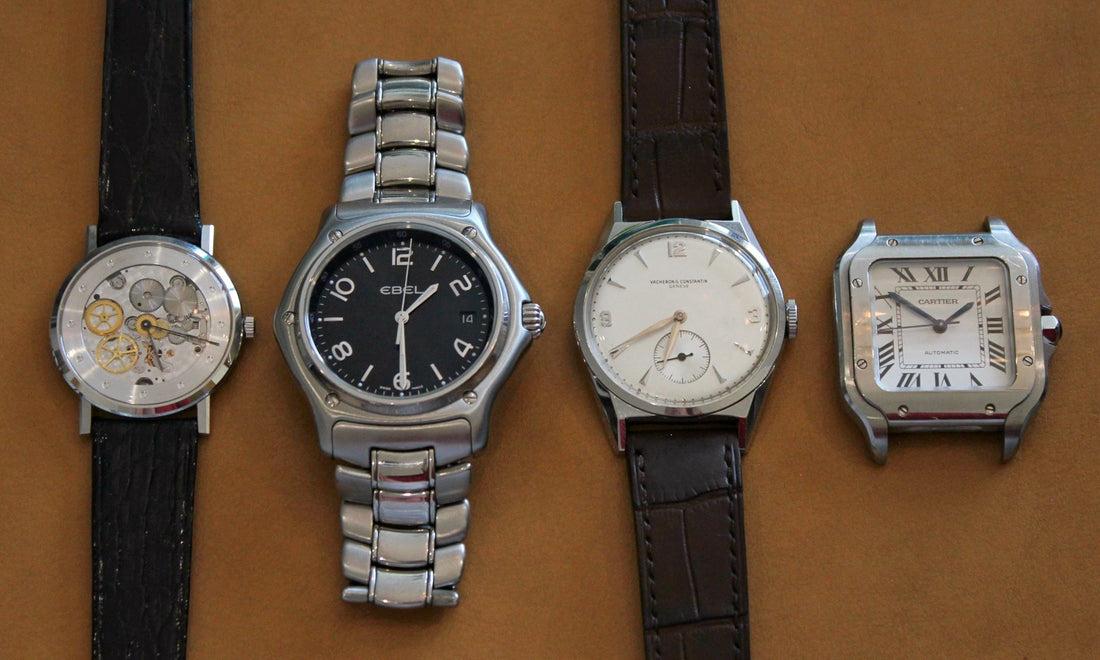People are an important part of the watch hobby. There are many ways to do it, and in this blog series, we interview different enthusiasts to get to the heart of their hobby. In the interviews, we go behind the watches and go through the thoughts and stories behind them, as well as the paths of the enthusiasts from the beginning of the hobby to the present day. Since the watches themselves play the main role in the interviews, the interviewees can remain anonymous if they wish.
What sparked your interest in watches?
I had never really worn watches, but when I was studying at a goldsmith school in the late 1990s, I was doing an internship in a goldsmith shop in my second year and the owner of the shop introduced me to watches. I bought an Eterna-Matic Kontiki diving watch from him, which remained as my daily watch for a long time. After my studies, I worked as a painter and there was a watchmaker's shop next to my studio and I often went there to chat and ask about watches. I bought vintage Certina and Leijona manual wind watches from the watchmaker, which served as daily watches in addition to the Kontiki. About ten years ago, my enthusiasm for watches truly sparked when I bought a 1960s gold Omega from another enthusiast. Since then, various watches have been bought and sold as interesting individuals have come by.

How has your hobby and attitude towards watches changed over the years?
At first, I didn't understand watches any more deeply than that they were good looking and practical objects. I was mainly attracted to the Kontiki by its appearance, durability and water resistance, which made it a great watch for everyday use. After returning to the precious metal industry, I also traded in watches on a small scale. I made contacts and met various enthusiasts and collectors, and I also got to experience really high-class watches. This got me interested in watch movements and especially their high-quality finishing and the craftsmanship associated with it. My first high end watch was a Patek Philippe blue-dial Calatrava with a cal 23-300 movement, which I bought about seven years ago. After I got to taste the quality of finishing like Patek Philippe, Omegas and other watches of its level began to seem very modest, and they no longer offered what I was looking for in watches.

You have made art as your profession and are also trained as a goldsmith. Do the same things resonate in watches as in art and, for example, jewelry?
Absolutely. I am very impressed if a painting, piece of jewelry or a watch shows the ultimate technical craftsmanship, its execution and finishing. Nowadays, you see less and less of that. In art, a good example of this is the Dutchman Jan van Huysum with his flower paintings.

Are watches art?
To some extent yes, but I rather see them as the results of truly high-quality craftsmanship. For example, Philippe Dufour and Kari Voutilainen's watches showcase amazing technical innovations, but they have risen to world fame with their ultimate craftsmanship.
Is there any particular theme running through your hobby?
Not really, I buy watches based on what I happen to be fascinated by at that moment. However, I usually choose vintage watches because of their simplicity, physically smaller size, and the quality of the movement and its finishing. I also like many slightly more unusual watches, for example, Jaeger LeCoultre and Piaget have made many special models of watches that have also used rare materials in the dials. Many people are interested in the history of watches and individual models, but for me it is enough that the watch is made and finished really well, then it doesn't need anything extra.
There are currently four watches in your collection. What is so appealing about these watches and why are they part of your collection?
Piaget is a special and very beautiful watch and truly unique. It is also unworn, which has always fascinated me, because I value originality in watches and the untouched condition of the cases and movements. I also like Piaget as a brand, and the small size of this watch appeals to me. I have never worn it, but it has rather been an object of admiration and appreciation in my collection.


I bought this Cartier Santos about six years ago when I was going through a phase where I liked square watches. I wanted a watch that I would also dare to wear. I was debating between quartz and mechanical and finally decided on mechanical for emotional reasons. I have four different straps for it, the original steel strap and various leather straps that I wear the watch with most often.



I bought this Vacheron Constantin about four years ago and what particularly fascinated me was that the watch was unworn and came with the original box and hang tag. It is powered by the legendary 453 movement, which is completely untouched and has the Geneva seal. When I sold my previous Patek Philippe, I was left with the idea that I had to have one watch in my collection that had that seal, and this watch answered the call. I also like the angular elements in the design of the steel case. I rarely wear this watch, mainly on special occasions. I made the watch strap myself when I was frustrated that I couldn't find an unpadded leather strap on the market that was suitable for a vintage watch and used a more exotic leather.

(A timelessly elegant Vacheron finishes any outfit.)
What was the last watch you sold?
Audemars Piguet Jules chronograph with a steel case from the early 2000s. I try to keep my collection as small as possible and as Cartier took more and more wrist time from it, I didn't want to just keep it lying around with no use. I've never been particularly interested in chronograph functions and I don't use them, so I felt that a watch with those features was a bit pointless for me, even though the watch itself was gorgeous. I want my watches to actually be used and if a watch is left on the shelf, there has to be a good reason for it, like with the Piaget its uniqueness and unworn condition.

Next watch?
The next potential purchase would probably be something between the Cartier and the Vacheron, something I would dare to wear, that would be vintage and would take the place of the Ebel. A vintage Audemars Piguet in steel would probably be the best fit for that role.
Your dream watch?
I don't have a real dream watch, at least at this moment. Things are relatively calm on the watch front right now and with these four watches I feel like I can handle any situation well, but as we know, things can change quickly.

